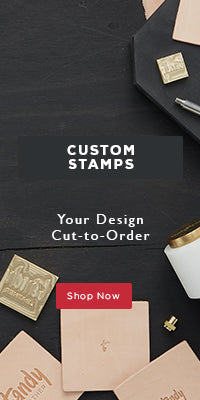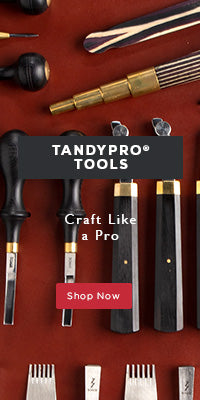All Leathercraft Library patterns and projects are property of Tandy Leather. Projects and patterns available are a part of the Tandy Leather Archive and may contain outdated product information or service offerings. Projects and patterns can be reproduced for personal use by printing, but Tandy Leather cannot guarantee the quality of reproduction or printing due to the image quality available. Some project and pattern themes or motifs may not be representative of Tandy Leather’s current views.

Leather goods storage- best practices!

Leather goods storage- best practices!

Did you inherit a briefcase, bag, wallet or boots from a loved one? Did you thrift a stellar belt or incredibly unique leather hat a la Indiana Jones but you know you only want to wear it once or twice a year? Are you new to leathercrafting and you’ve spent a small fortune building your stock but have no idea how quickly you’ll get through all of it? How the heck do you ensure your leather stays in peak condition until you need it?
Many people are under the impression that “leather lasts forever”, but the truth is leather lasts as long as you take care of it. The best choice is to take care of your leather- consistently, even when stored for long periods. In reality, once you can see the damage or break down of the leather fibers, it means the degradation has been occurring for quite some time. Sometimes products like Dr. Jackson’s Hide Rejuvenator can help recover the piece, but the goal is to prevent reaching those stages.
STORING LEATHER PIECES
When looking at how to store your leather we want to look at both veg-tan and chrome-tan. Veg-tan tends to be a little more fragile and temperamental. Perhaps one of the most frustrating things about veg-tan leather is also one of its greatest qualities. Veg-tan can become anything because it is unfinished! However, that lack of finish also means that it can, and does, absorb anything it comes in contact with. Light, oils, pigments, etc. are all things veg-tan will absorb without hesitation. It is so important you make sure to store all of your leather materials following these simple guidelines:
- In a cool, low light space with ~50% humidity to prevent mold and sunburn
- Flat and grain side down to prevent piping*, or loosely rolled, wrapped or covered in dark paper (never plastic!)
- Not touching any other leather (especially colored, oiled or waxed leathers)- this includes separating scrap bins!
- Away from prying finger oils
- Never fold your leather, to prevent creases
- Never store on or near concrete (it will leech all moisture causing brittleness)
- Never in contact with metal, which can react with tanning chemicals
- Optional: if materials are going long periods without being used, consider conditioning them as needed
*piping: this is what happens when the grain and flesh begin to separate, causing the leather to look wrinkled. In most cases it cannot be repaired, so preventing it is essential!
The odd men out, like rawhide, hair-on hides, etc. are also important, however, we'll give them their own article in the future, so make sure to come back and check it out!

STORING COMPLETED LEATHER GOODS
Have you ever gone to put on a pair of leather shoes or grabbed a leather purse you haven’t used in a while and noticed that they looked a little misshapen and lacked the elegance they once possessed? This is common among leather pieces that have been stored incorrectly. Now, unsurprising to most, the recommendations for leather storage for finished pieces is quite similar to your raw materials, though we add a few steps for cleanliness, shapeliness and extra conditioning.
The following steps are for storing your leather goods long term, and would not be ideal for something you are using frequently. A quick how-to on handling these products looks something like this (please note: this is not the same for suedes, deerskins, etc.):
- Wipe with with a damp microfiber cloth to remove dust and dirt
- Generously apply a leather condition of your choice like 4-Way Care or Aussie Leather Conditioner and let it soak in for 30+ minutes ideally in a warm spot, out of direct sunlight
- Stuff your pieces like hats, bags and shoes with acid free, no ink paper to help retain the shape
- Avoid storing in plastic bags or containers, which can retain moisture and cause mold; instead choose breathable dust bags
- Store in a temperature controlled area that is cool and dry on flat surfaces with enough room to breath or hanging to hold their correct shape
- Keep your projects separated during storage- even if they are all leather!
IN CONCLUSION
Following these best practices will help you protect the quality and longevity of all your leather and leather projects. Keeping your products clean, conditioned and properly aerated will lead to a lifetime of service from your favorite pieces, guaranteeing money well invested and heirlooms well protected.






Comments
Leave a comment